This section is devoted to the information that will be useful in the creation of a Kin's Domains.
Tips for Setting Up Your Homeschool
Homeschooling can be a truly gratifying experience for both the parent and child. On one hand, you're helping your child discover their potential. On the other, you're rediscovering your own intellect.
While homeschooling laws vary from state to state, homeschooling is legal everywhere in America.
Whereas the curriculum, state laws, and supplies needed are pretty much set in stone, the setup of the learning environment you create in your home is totally up to you.
With this in mind, here are some tips to create a stimulating homeschooling environment.
Classroom Furniture
Your decision to teach your child from the comforts of your own home does not mean your class space shouldn't look the part.
Adding classroom furniture to your child's learning space will not only help add legitimacy to your homeschooling efforts, it will also provide your child with the tools that promote a positive learning environment.
Some of the furniture needed to homeschool your child includes:
- Dry erase markers & board
- Computer desk
- Bulletin board
- Standard desk
- Chairs
- Bookcases & shelves
- Organization & storage containers
Once you have the furniture you need to homeschool your child, the next step is to plan.
Lesson Plans
Technology has given the ultimate assist to parents seeking to plan a comprehensive curriculum for their children. By using the Internet, parents can access free curriculum guides and lesson planners.
The free curriculum guides provided on the Franklin D. Roosevelt Presidential Library and Museum website are also accompanied by links to free video that compliments the curriculum guides.
While it's best to find a local homeschooling support group in your area to assist you with questions and issues that arise, many questions can be answered on online forums such as Homeschool World.
Online Academic Portfolio
An online academic portfolio is a great way to showcase your child's academic progress and achievements. Through the use of this portfolio, you can create a permanent online archive of your child's academic development that includes:
- Grades
- Research papers
- Evaluations
- Published articles
Academic portfolios can also assist your child in the future as potential employers can easily search and access your achievements and certifications online.
From my personal experience, many of the students I have met who were homeschooled were extremely intelligent and were well-adjusted socially, even though they did not socialize in large groups of same-age children growing up. Although, to keep their kids socialized (and physically fit), many homeschooling parents have their kids participate in community sports leagues.
If you're up for the commitment and want to build a stronger bond with your child, you may want to consider homeschooling as an educational option. With the right tools, setting and supplies, it is possible to make your home a great environment for learning.
http://www.mint.com/
Images copyright: http://www.gussysews.com/

Our Homeschool Downsizes
By Joanie
We've been homeschooling our youngest, Ryan, for 3 years now. In the first few years, I went a little overboard in the enthusiasm department. I set up a school in our living room and dining room space, that could have comfortably accommodated an army of children.
We had it all. Each subject had its own area and center.
Here is a close-up of the math center.
We even had a beautifully stocked and categorized "library", complete with comfy chairs.
And where, might you ask, did we end up doing school EVERY blasted day? The kitchen table, of course! Or snuggled up on the couch in the family room, with nary a bookcase, school supply or desk in sight! Neither one of us felt compelled to spend time in that formal classroom.
It was time for a change. Everything you see in the above photos, has now been relocated. A few things made it into Ryan's room or storage and many others were given away for our friends to enjoy.
So, what's left? We're down to just one bookcase in the kitchen with the bare essentials; our books, papers and school supplies. It's heaven! The serenity and focus that came with the downsize has been incredible. I was so worried about not "doing it right" that I overcompensated with way too much stuff.
Now, without all of the clutter, we have more space to think and breathe. We are both much happier! There is less of that "have-to" feeling and more of an excitement about learning. Lesson learned.
Whether you homeschool or help with homework every night, where's your family's favorite spot for learning?
http://thebrightside.typepad.com/

Maximizing Success in Homeschooling
By Candice Childs, Family Academy co-founder
Written guarantees to successful homeschooling
are not issued by Family Academy, but we have
created a program that will maximize the
homeschooling family's potential to succeed
over the long-haul. Parents, however, must
remain the day-to-day teacher, and thus hold
several of the critical keys to success.
John Holt, an early forerunner to the modern
homeschooling movement and author of
Teach Your Own and How Children Learn
commented that the mandatory ingredient to
successful homeschooling is: the parent must
like the child and communicate an enjoyment
of being around him. Without this, even the
most dynamic homeschool program or
curriculum will fail.
When parent send their children off to school
for the better part of each weekday, their
children's personalities often change. This is
due to the wall of self-protection many erect to
survive the institutional atmosphere. They
become someone other than who they were
before stepping into the mass production/
assembly line approach to education called
school.
Inundated with peer values and culture and
the institutional system where adults are often
perceived as the "enemy," and falling into the
"us and them" mentality, these children often
become unlikable.
Once removed from the traditional system,
parents typically find the delightful side of the
children's soul resurfaces within the safety and
freedom that only a loving family can provide.
Students leaving traditional schooling may
need up to one month per year of
institutionalism to become "themselves" again.
If the student has never been in school, this
"de-tox" from the school/peer culture can be
avoided. This is not to say all home-schooled
children are utterly and completely likable.
Parents must still build upon experiences in
their children's lives for nurturing integrity and
positive character qualities within their children, as well as provide training for spiritual
growth.
Homeschooling certainly allows more
opportunity to accomplish these critical needs.
Even without schools and peers, Adam and
Eve's children were hardly perfect. To be a
good parent, whether homeschooling or not,
is no easy task and requires much prayer,
wisdom and humility.
Other key qualities a teaching parent needs for
successful homeschooling are:
Refusing to let the clock, schedule, or
text dictate or "trump" the student's
learning needs.
This does not mean that time-management
and focus become unimportant, but failure is
certain if the student does not grasp the
concepts or master the skills in the current
lesson or chapter, particularly in a skillsequenced
subject like math.
An understanding of what the learner
already knows
To bore the children with "stuff" already
learned, or to discourage the children with
material beyond the current level of
understanding will recreate the traditional
schooling experience for many students. The
FA Teacher Consultant can help assess the
child's skills so the teaching parent knows
where to begin and/or where the "learning
gaps" are.
Showing and doing (rather than merely
telling) while allowing ample time for
self-directed learning
Hands-on experiences allow students to use
visually, auditory, and tactile/kinesthetic sense
to receive information into their minds. The
more senses used, the greater the understanding.
Giving the learner time to feel secure
with new information
Research has shown that most people need at
least seven exposures to information before
"getting it." A parent needs to remember that
a lesson taught the day before will need
several reviews before expecting the student
to remember the specific information, skill, or
concept (so re-read this at least seven times
over the next year!!)
Measuring understanding by questions
initiated by the learner rather than by
tests
Student questions, when encouraged by the
wise teaching parent, create a window to the
student's mind and will often enrich the
student's understanding and analytical skills
because the motivated student learned deeply
as he hears and discovers the answer to his
own question(s).
Jonas Salk, who made the great scientific
discovery of the polio vaccine, lauded his
discerning mother for encouraging him to look
at all of life and its experiences with three
questions: What happened? Why did it
happen? How can I use this information I the
future?
Exercising patience when learning is
slow
Reflect on the multiple times a parent will "gaga-,
da-dad, ma-ma" in delightful "dialogue"
with their baby, using happy and responsive
facial expressions in ongoing encounters.
Insights into the learning process can come
from recalling the various factors used to
develop the child's initial ability to
communicate.
Time and review with love, joy, and patience
will help from teaching adding to algebra,
from reciting the alphabet to writing an
annotated bibliography, from following a
recipe for chocolate child cookies to
formulating an experiment and applying the
scientific method.
Even with the perfect Teacher, the disciples
continually failed to understand until much
later what they were to learn, do, and become.
Modeling an enjoyment of learning
Children in
American learn English (or some facsimile)
while children in Japan learn Japanese.
Modeling is the key to language development
as well as to al learning. Children who see their
parents taking on new and challenging
learning experiences are more willing to take
the risks learning requires, particularly with
challenging concepts and skills.
Thus, homeschooling success rests critically
upon the relationship between the parent and
the child and less on specific teaching
techniques or tools. Parents are the child's first
teacher and can be their best. Love and caring
communicate and teach to the heart and soul
of the child.
Learning to "read" their children remains the
teaching parent's primary assignment, more
than getting their child to read the school
books. To some degree, success is a relative
term. Parents can hardly do worse than the
public schools, and in most cases will do
better. All of the current research both in
education and in character development has
proven the superiority of homeschooling.
The Family Academy Teacher Consultant's job
is to come along side of the teaching parent,
providing guidance and direction to empower
the parent to maximum successes, which
ultimately belongs to the parent and their
student.
http://www.familyacademy.org/
Images copyright: http://nclearningonline.org/; http://www.zayka-znayka.ru/

Watch Video:
Homeschooling Tips : Homeschooling: Getting Started
Health Benefits of Calcium
Calcium is an essential mineral for healthy bones, gums and teeth. Doctors often recommend women to take calcium supplements, who show early signs of bone problems, such as osteoporosis or osteopenia.
Strengthens Bones
Calcium strengthens backbone and ensures the right shape to the body apart from alleviating the risks of back pain. Calcium helps to keep the bones in its good shape and prevents many skeletal complaints like arthritis and osteoporosis which could hamper the free movement apart from being extremely painful.
Prevents Obesity
Calcium efficiently helps in maintaining an optimum body weight in both males and females. If there is any deficit in calcium in your diet, the body shall tend to release parathyroid hormone, which in turn stimulates the bones to release calcium into your blood stream, thereby keeping the balance. On the other side, parathyroid hormone also stimulates the production of fat and prevents its break down, which can again make you obese. So ensure that you are taking the right amount of calcium, so that obese does not creep in with other related health hazards.
Protects Cardiac Muscles
Calcium protects your heart muscles. Sufficient amounts of calcium help cardiac muscles to do the contraction and relaxation properly. Calcium also helps the nervous system to maintain the proper pressure in your arteries. If there is a calcium drop, a hormone called calcitrol is released which contracts the smooth muscles of the arteries, thereby increasing the blood pressure. Cardiac muscles need extracellular calcium ions for contraction. When the intracellular concentration of calcium increases, the calcium ions gather together to the protein troponin that stimulates extracellular fluid and the intracellular stores, even the skeletal muscle, which is only activated by calcium stored in the sarcoplasmic reticulum.
Prevents Colon Cancer
Adequate calcium assures you to alleviate the overall risk of colon cancer and suppresses the growth of polyps that can lead to cancer. Calcium supplementation reduces the risk of adenomas, also non as nonmalignant tumors in the colon. This is actually a precursor to colon cancer, however it's still not known if calcium intake minimizes the cancer risk completely. The excess calcium that's left in your intestines after your body absorbs what it needs. On its way through the colon, this unabsorbed calcium is believed to bind with cancer promoters so they're excreted together from the body. Studies have shown that both food sources of calcium and calcium supplements provide this protective effect. Calcium supplements should be taken in liquid form because liquid vitamins absorb 5 times better than the pills.
Prevents Premenstrual Blues
Adequate amount of calcium lessens the symptoms of premenstrual syndrome like dizziness, mood swings, hypertension and so on. Low level of calcium might trigger the release of hormones, which are responsible premenstrual mood swings including irritability, and depression amongst others.
Prevents Kidney Stones
Kidney Stones are actually the crystallized deposits of calcium and other minerals in the human urinary tract. The most common form of kidney stones is the oxalate stones. Previously, it was thought that high calcium intakes or high calcium absorption develops kidney stones, but the latest studies show that high dietary calcium intakes decrease the hazards of kidney stones considerably. In short, dietary calcium does not cause kidney stones, but the excess calcium present in water that result in kidney stones. Other factors like high oxalate consumption from leafy vegetables like kale and spinach, and reduced fluid consumption can prove to be a big cause for kidney stones.
Ensures a Healthy Alkaline pH Level
Junk foods, excess sugars and preserved food items contributes in forming acidity in the body, which in turn could give rise to various disease conditions like cancer, kidney stones and hypertension. Calcium helps to maintain a healthy pH level, thereby improving your vitality and overall health.
Controls Blood Pressure
Some researches declared that a vegetarian diet with high amount of calcium, magnesium and potassium, and fiber will show you reduced blood pressure. While other researchers concluded with different opinions and said that increased calcium intake results in hypertension. Later it was seen that the reason for such assorted results was because these studies tested the effect of single nutrients rather than the food sources having that nutrient content. National Institutes of Health conducted a research called "Dietary Approaches to Stop Hypertension (DASH)". The "typical American" diet was compared with two altered diets that were rich in fruits-and-vegetables and a combo "DASH" diet stuffed with fruits, vegetables, and calcium. The results showed increased calcium intakes results in decreased blood pressure.
Maintains Healthy Teeth and Gums
Calcium protects your teeth by keeping the jaw bone strong and sturdy all through your life, which in turn ensures tight fitting teeth where bacteria cannot thrive. Thus, before your teeth and gums start giving trouble ensure a calcium rich diet regularly. Calcium intake should be high especially from tender age, so that your kid naturally grows up with strong teeth.
Helps in Transportation of Nutrients
Calcium helps in the easy movement of nutrients across cell membranes.
Symptoms of Calcium Deficiency
Realizing calcium deficiency in the body is quite easy. Its when your muscles ache and twitches, or you get sudden cramps and spasm; palpitations, high blood pressure, osteoporosis, loose teeth and gum diseases, insomnia, premenstrual cramps, tetany, hypertension and arthritis also indicate calcium deficiency. Often many children suffer from rickets the bones become weak and flexible, they have bowed legs, sunken chests and beaded ribs; they have not been nourished with calcium from birth itself. Thus, regular calcium supply is very important in growing children and teenagers as it can substantially reduce the risks of osteoporosis in old age. This bone ailment is common in one out of every three women and in one man in every 12, above 50years of age.
http://www.organicfacts.net/
Image Copyrights: http://spinanebolit.com.ua/

The Many Forms of Calcium
by Kimberly Johnson,
Cordata Co-op Wellness Assistant Manager
As a team member in our Cordata
Wellness department, I field questions
about calcium every day. People
commonly ask, "Which form is the
most absorbable?" and wonder what
the differences are between the various
options. To help clear up some of the
confusion associated with this important
mineral, I've compiled information
on the common forms of supplemental
calcium available.
The most basic form of calcium
available is calcium carbonate. This
form must go through approximately
12 chemical reactions in order to
become a form the body can use, and
is usually sourced from limestone. At
40 percent elemental calcium, it is the
densest form available; however with
an absorption rate of 7 to 8 percent it is
the least absorbable. The side effects of
calcium carbonate may include alkalization
of the stomach, and an increased
risk of kidney stones. Calcium carbonate
must be taken with food and is not
recommended for anyone who has low
stomach acid levels.
One of the most popular forms available
is calcium citrate (the calcium salt
of citric acid). It contains 21 percent
elemental calcium, so although there is
less calcium per pill than the carbonate
form, it is better absorbed. Calcium
citrate is the preferred form of calcium
for anyone with low stomach acid
levels. There are no known side effects
with this form.
Calcium lactate is the calcium salt
of lactic acid, and changes to calcium
bicarbonate (the type used by the
body) in one chemical step. It is highly
soluble in water and does not depend
on an acidic environment, so it is
another form that is ideal for those with
low stomach acid. This is also the form
of calcium found in milk.
Calcium phosphate/calcium hydrogen
phosphate or microcrystalline
hydroxyapatite (MCHA) is a form
of calcium that is found in human
bone structure and tooth enamel. The
source of MCHA supplements is usually
bovine bone. A 1995 randomized
placebo-controlled study of 40 people
in Europe found that it was more effective
than calcium carbonate in slowing
bone loss. Many MCHA supplements
also contain minerals (magnesium,
zinc, copper, manganese, potassium),
vitamins (vitamin C, vitamin D3, vitamin
K2 as MK-7), and trace minerals
(boron, silica, strontium, and vanadium),
all of which are necessary to build
healthy bone matrix.
There is an exciting new trend in
calcium supplementation that involves
using plant forms of calcium, including
those sourced from sea vegetables:
lithothamnium calcareum, lithothamnium
coralloides, and algas calcareous.
Because these forms of calcium are so
well absorbed by the body, lower doses
are quite effective in achieving gains in
bone mass.
Along with the form of calcium
you decide to take, it is also important
to include the vitamins and minerals
that will facilitate the proper growth
of bone tissue. Vitamin D3 (cholecalciferol)
is an essential component of
healthy bone, and can be taken separately
or in combination with calcium.
In addition, 60 percent of the body's
magnesium is stored in bone tissue,
and it is an important element in the
formation of bone protein.
In regard to dosage, it is best to take
calcium in smaller doses throughout
the day to aid absorption. Avoid taking
more than 500 milligrams of calcium
at one time and allow 4 to 6 hours
between doses. Depending on your
age and sex, an adult requires between
1,000 and 1,300 mg of calcium daily.
As always, you should consult your
health care practitioner who can help
you decide which form of calcium, at
what dosage, is best for you. The Coop
carries all of the forms of calcium
mentioned. Stop by our Wellness
departments for help in selecting the
product that will work for you.
http://www.communityfood.coop/
Image Copyright: http://www.rusdental.ru/

Sesame Seeds - Your Best Food Source of Calcium
by Yuri Elkaim
Sesame Seeds - Your Best Food Source of Calcium. Indeed it's true!
Dairy is not your best source of calcium. It has never has been and never will be. Unfortunately, billions of dollars of milk and dairy advertisements from the dairy industry would have you believe otherwise.
After all, how would you know that sesame seeds or green leafies are better sources of calcium than milk if no one ever told you over and over again?
Well, now you know. Now, let's have a look at why.
Why You Shouldn't Drink Milk for Calcium
First off, where do cows get their calcium from? Grass!
Cow's milk provides roughly 118 mg of calcium/100 g. Considering that the recommended daily intake for calcium is between 800-1,200 mg (and assuming that milk/dairy is a balanced source of calcium - which it is not), you would need to drink 0.9 - 1.2 liters of 2% milk per day to meet this requirement.
That's a whopping four to five 250 ml glasses of milk per day!
That's crazy! Especially, considering that more than 70% of the population has some type of sensitivity to milk - whether it be its lactose or casein content.
So forget what you've heard about drinking more milk. Research has even shown that the countries that have the highest dairy consumption (UK, Finland, Sweden, USA) also have the highest incidence of osteoporosis. These northern countries (but not the USA) also enjoy less vitamin D from limited sun exposure; a factor that is important to consider with regards to bone health.
Here are a few more reasons to reconsider drinking milk for calcium:
1. The ratio of calcium to phosphorus in human milk is 2.35 : 1 but it is only 1.27 : 1 in cow's milk. This is an important ratio given that phosphorus impairs calcium absorption. More phosphorus = less calcium absorption!
2. Cow's milk has 3x more protein than human milk making it the most highly acidic food you can consume. More acid in the body = calcium loss from the bones! Don't get me wrong, cow's milk is great to meet the needs of a calf, but not a human. After all, cows grow to be roughly 3-4x heavier than humans - they need that extra protein!
The Healthier Calcium Alternatives
As the title of this post mentions, sesame seeds are your best food source of calcium.
Those little seeds that make up tahini (and are a part of hummus) provide a whopping 1,160 mg of calcium/100 g serving! That's about 10x the amount of calcium vs. milk for the same serving size.
[There is a little bit of controversy about sesame seeds and calcium, because there is a substantial difference between the calcium content of hulled versus unhulled sesame seeds. When the hulls remain on the seeds, one tablespoon of sesame seeds will contains about 88 milligrams of calcium. When the hulls are removed, this same tablespoon will contain about 37 milligrams (about 60% less). Tahini—a spreadable paste made from ground sesame seeds—is usually made from hulled seeds (seeds with the hulls removed, called kernels), and so it will usually contain this lower amount of calcium.
The term "sesame butter" can sometimes refer to tahini made from sesame seed kernels, or it can also be used to mean a seed paste made from whole sesame seeds—hull included.
Although the seed hulls provide an additional 51 milligrams of calcium per tablespoon of seeds, the calcium found in the hulls appears in large part to be found in the form of calcium oxalate. This form of calcium is different than the form found in the kernels, and it is a less absorbable form of calcium. So even though a person would be likely to get more calcium from sesame seeds or sesame seed butter that contained the hulls, there is a question about how much more calcium would be involved. It would defintely be less than the 51 additional milligrams found in the seed hulls. And there would also, of course, be a question about the place of hull-containing sesame seeds on an oxalate-restricted diet. ]
Excerption from "Sesame seeds" article, sourced from http://www.whfoods.com/
Other Rich Sources of Calcium
Claiming the silver medal for calcium content is kelp. This incredible sea vegetable (which can easily be sprinkled on salads and soups) provides an amazing 1,093 mg of calcium/100 g serving.
Kelp is also one of the highest sources of incredibly rare and health promoting minerals found deep in the sea bed. One such mineral is iodine - a critical mineral for those who suffer from a malfunctioning thyroid gland. Add kelp to your diet and your health will improve dramatically!
After these 2 super-sources of calcium, your next bet is any green leafy vegetable ranging from green grasses to kale and broccoli. Anything green provides tremendous nutrition, alkalinity, and high amounts of calcium.
Remember, when products containing calcium are heated, the calcium transforms into nonabsorbable form. At best it is cleanced away from your body. At worst, it is accumulated in your kidneys forming kidneys stones.
http://blog.totalwellnessconsulting.ca/
Image Copyright: http://www.ua.all.biz/

Watch Video:
10 Vegan Sources of Calcium
The Hidden Danger of Teeth Whitening
by Dr. Al Sears
Who doesn't want a sparkling smile?
It's no secret that good teeth can help enhance your appearance and boost your overall self-confidence. And for the most part, people define "good teeth" as bright, white, and stain-free.
Did you know that teeth whitening is the number one most requested cosmetic procedure in the United States?1 And it doesn't show any sign of slowing down.
People have been able to take advantage of professional whitening services from their dentists for over 50 years now. And today, you can find whitening strips, gels, trays, and lights anywhere from your dentist's office to your local grocery store. They're quick, easy to use, and can be very effective at removing unsightly stains.
Perfect, right?
Not really.
Most of these products contain some kind of peroxide to remove the stains. In some cases, the hydrogen peroxide, along with a variety of other chemicals found in these products, can cause alarming problems such as gum irritation, tooth sensitivity, and – in some cases – tooth decay.
Yep. These products that you may be using to make your teeth look better could make them rot and fall out.
Overuse of at-home whitening kits has some serious risks. Not only can they cause over-sensitivity, they can also damage tissues and wear the enamel down so much that your teeth look almost see-through and very unnatural. Eventually, they can become odd shades of blue and gray.2
You see, the off-white color of teeth that most people find unsightly and unattractive is the color that our teeth are meant to look. It's really a good thing.
The color of your teeth is based on the amount of calcium in your teeth's enamel. The more calcium you have, the more color is in your teeth. But, when you use bleach, you're using a product that contains abrasives so it can scrub away stains left by food, drinks, and other things like smoking. But, it can also scrub away the enamel on your teeth.
This is called demineralization.
Demineralization happens when substances that you put in your mouth starts to dissolve your tooth's enamel. It can also damage the enamel's calcium, which can lead to tooth decay.3
Tooth decay can cause a variety of issues including pain, tooth loss, infection, chewing problems, and serious infection that can travel to other parts of your body and make you very ill.
Also, it's important to remember that bleaching products are fairly new on the market. We still don't know any of the long-term side effects that may occur.
But, if you'd like to get a more dazzling smile, why don't you give some natural alternatives a try:
- STRAWBERRIES. Mash up strawberries into a pulp and mix with a little sea salt and rub on teeth.
- BAKING SODA. Put a little on your tooth brush with your regular toothpaste.
- CRUNCHY VEGETABLES. Celery, carrots, broccoli, and cucumbers are naturally abrasive and can help scrub away stains.
|
http://www.mypureradiance.com/
Image Copyright: http://lady.gazeta.kz/

Watch Video:
Watch video: Warning!! Dangers of Teeth Whitening Products;

Naturally whiten your teeth with these eight tips
by Alex Malinsky
Dental hygiene is an important part of keeping healthy, but maintaining a white smile is also a great way to show that you take pride in your appearance and wish to keep your body in as good of shape as possible. Because dental problems are correlated with other health risks, keeping your smile as bright and clean as you can is an important step in keeping your entire body healthy. Today's market offers a great deal of dental hygiene products, but many of them are loaded with harmful chemicals. To keep your teeth naturally white, here are five ways to safely brighten your smile.
1. EAT CRUNCHY FOODS. Many fruits and vegetables, such as apples, carrots, celery, and pears, can naturally clean and whiten teeth due to their acidic nature. The crunchier the food, the more abrasive it is and the cleaner it will get your teeth. If you adhere to a natural diet, you most likely already consume a fair number of fruits and vegetables, but keep in mind that you need to eat them in their whole form in order to benefit from whiter teeth. For example, bite into your next apple or peach instead of cutting it up or running it through the juicer.
2. UP THE (Grass-Fed, Organic, Raw) DAIRY. Recent scientific evidence indicates that cheese, milk, and yogurt contain minerals that strengthen teeth and improve their appearance. Among these minerals are calcium and phosphorus, which enhance teeth's enamel. With stronger enamel, your teeth will be able to better withstand the other natural remedies on this list.
3. EAT MORE STRAWBERRIES. Strawberries contain malic acid, which removes discolorations on the surface of the teeth. Additionally, the berries' texture helps buff the enamel, creating a brighter, smoother appearance. To heighten the effects of strawberries as a natural teeth whitener, combine a crushed berry with one half of a teaspoon of baking soda. Once the mixture is complete, apply and leave on teeth for five minutes. Only do this once in a while, to keep the enamel of the teeth from breaking down.
4. USE BAKING SODA. The literature on baking soda is diverse, as some professionals say to use it often and others say not to use it at all, but studies show that limited use of baking soda can enhance the whiteness of teeth. Periodically, utilize a baking soda and salt mixture to clean and whiten teeth. Strawberries may also be incorporated with baking soda for a more natural solution.
5. DRINK WITH A STRAW. Even if you follow a natural diet, the beverages that you drink have the tendency to stain teeth. To avoid as many stains as possible, use a straw to draw beverages into your mouth, instead of having them slide over your teeth. The less contact your teeth have with damaging substances, the whiter they will be.
6. CHOMP, CHOMP. Snacking on something naturally chewy (like raisins or sugar free gum) encourages the production of saliva, which acts as a natural mouthwash, washing away stains and left behind food particles. Just make sure to floss every day to clean between the teeth!
7. GET ELECTRIC. So, this may not be an all-natural or DIY tip, but another great way to keep teeth as bright and white as possible is to use an electric toothbrush since the rpm is designed to break up stains that manual toothbrushes can't budge.
8. GET PROFESSIONAL CLEAN. As always onE of the best ways to keep your teeth as white as possible is by having regular teeth cleanings since dental hygienists are trained to remove stubborn dental stains, which not only leaves the teeth instantly whiter and the mouth healthier, but also makes the surface of the teeth more susceptible to the actual process of whitening.
Maintaining a bright, white smile is something that today's culture values highly; however, it is also an indication that you have maintained healthy teeth. Be careful, though, because teeth are fragile. Using too much baking soda, eating too many acidic fruits, or trying too hard to whiten your smile can cause great amounts of damage to your enamel, gums, and other parts of your mouth. Remember to keep a natural approach by using all of these tips in moderation.
http://www.naturalnews.com/
Images Copyrights: http://www.liveinternet.ru/
An Interview with Seth Itzkan: Using Holistic Management to Address Desertification and Climate Change
By Carol Dreibelbis
NAME: Seth Itzkan
AFFILIATION: President of Planet-TECH Associates, a consultancy focusing on trends and innovations.
BIO: Seth has 25 years of experience consulting with private and public agencies on strategies for success in changing times. He is interested in the mitigation of climate change and is investigating new approaches to the problem, particularly focusing on the role of soils and grassland restoration through "holistic management."
In 2011, Seth spent six weeks at the Africa Center for Holistic Management in northwest Zimbabwe, the sister organization of the Savory Institute in Colorado. While in Zimbabwe, he saw firsthand the restoration of degraded lands through improved land and livestock management. Since his return to the United States, he has advocated for holistic management to be considered as a methodology to address both desertification and global warming.
Seth recently gave a TEDx talk on the topic of "Reversing Global Warming with Livestock?" and presented at the Center for International Environment and Resource Policy (CIERP) at the Fletcher School at Tufts University. With colleagues at Tufts, he is helping to organize a conference in January 2013 on holistic management, titled "Creating the Future We Want: Holistic Solutions to Global Challenges." Seth is co-manager of the Google group, Soil-Age, which explores the opportunities and potential impacts of soil restoration. He is a graduate of the Tufts College of Engineering and the University of Houston Masters of Science Program in Studies of the Future.
What is holistic livestock management, and how does this idea challenge conventional grazing systems?
Holistic management seeks to restore grassland ecosystems by using livestock as a proxy for the wild herds of grazing ruminants that the prairies and savannas of the world co-evolved with and depend on. Due to the pressures of predation, natural herds form tightly packed groups that are continuously on the go, moving in a pattern that is unlike conventional livestock management. This natural herd action is essential to plant grazing and nutrient and water recycling and distribution. It was the abundance, not the paucity, of these grass-eating creatures that sustained the verdant regions of most continental interiors. Thus, holistic management recognizes that fully functioning grassland ecosystems cannot be sustained without herds of grazing animals.
Recognizing the severing of the ecosystem that resulted from the decimation of the great herds, holistic management attempts to restore balance by moving livestock in a manner that simulates the pack density and mobility of the wild grazers. This helps recreate the desirable ruminant impact while eliminating deleterious effects of conventional livestock management. It is achieved through adherence to a grazing plan that stimulates plant growth, provides natural fertilization, and keeps the herds from returning to eat the same plants until they are fully re-grown.
Holistic management poses two major challenges. First, it challenges the idea that conventional grazing—including keeping livestock sedentary and corralled in permanent fixtures—is sustainable. Second, it challenges the idea that the weight of livestock is all that matters to the rancher. Holistic management strives for economic, social, and environmental success factors. By focusing on more than one variable, we can see improvements across all three. Natural systems, like grasslands with ruminants, cannot be managed with reductionist thinking. There must be a holistic framework.
What are the indicators for improved ecosystem health under holistic management techniques?
More grass cover:This means an increase in the density of the plants. In a healthy grassland system, there should be no space between plants—i.e., no bare ground. Any water from the sky should land on leaves, not dirt. Achieving this state using livestock is possible through holistic management, even in areas of low seasonal rainfall. When animal movement is done properly, plant growth is stimulated through grazing at the opportune time, soil health is enhanced with essential nutrients, and the land is "impacted" through hoof action, trampling plant litter and seeds into the ground along with manure to assure cover for new growth and moisture retention.
Increased surface water:Increased surface water is one of the most important indicators of ecosystem recovery. In low, seasonal-rainfall grassland and savanna environments, the measure of surface water health that a land manager can readily see is how long springs or watering holes sustain into the dry season. When the soil is healthy, it is rich with organic matter that absorbs water, pulling it down and replenishing the water table. When soil is depleted, rainwater flows away, creating gullies and carrying topsoil with it. The erosion process can drain the water table. However, the opposite is also true. Improved soil health will replenish the water table. As this happens, the change in surface water will become apparent: streams and surface pools remain wet longer into the dry season and may also widen. Additionally, grass cover in riparian areas will extend to the edge of streams, and there will be an increase in aquatic plants and animals.
Enhanced plant and wildlife diversity: As grasslands recover, plant and wildlife diversity increases. This is driven by the changing biological composition of the soil—the bacterial and fungal communities that hide away carbon and exchange nutrients with roots. This soil community is enhanced by ruminant manure, which is loaded with water, minerals, and billions of essential bacteria that serve as "reinforcements" to their fellow microbes in the ground, particularly important in the dry season. As plants diversify, so will the bugs, birds, and larger wildlife.
Eradication of problem or invasive species:As properly timed grazing restores the grassland soils to their prior state, new conditions will favor the native species. Invasive species that had benefited from depleted soil will no longer be advantaged. Additionally, livestock, including cattle and goats, can be used as tools to directly eradicate undesired species. For example, goats can eat prickly pear, and cattle can disrupt the life cycle of cheatgrass and trample and kill woody brush.
Why is holistic management significant to the issues of desertification and mitigating and adapting to climate change?
Desertification coincides with the removal of the natural impact of herding ruminants. Although much desertification is rightly blamed on poor ranching and agricultural practices, holistic management postulates that the rootcause of grassland desertification worldwide is the decimation of large herding animals, and their predators and cousin creatures that were essential to ecosystem health. In North America, for example, we saw the elimination of approximately 70 million buffalo, 2 million wolves, and 4 billion (yes, billion) prairie dogs. By the 1890s, most of these creatures were near extinction. The dust bowls of the 1930s are attributed to drought and poor farming methods; however, the seeds of desertification were set nearly a century earlier when the wholesale slaughter of native wildlife became common practice.
Holistic management offers a solution to this. It presents a natural approach for restoring grasslands that in turn play a major role in atmospheric carbon capture and climate stability. Although rarely given central billing in the climate change narrative, grasslands are actually the largest terrestrial ecosystem and one of the greatest stores of atmospheric carbon, on par with, if not greater than, that of forests and the atmosphere itself. Unlike forests, however, where carbon capture is predominantly held above ground and only for the lifetime of the trees, grasslands build soil that can grow to meters deep and sequester carbon for millennia.
The challenge for the climate change community is to realize that grasslands cannot be restored without the impact of herding ruminants. And without the carbon capturing services provided through grassland photosynthesis and soil formation, there is no mitigation of global warming. Even if all fossil fuel use is ceased, without addressing the worldwide problem of atmospheric carbon loading through land degradation, we will continue down the path of a runaway climate catastrophe. One way or another, large grazing animals in significant quantities are on the critical path to a livable future for humans on this planet.
Using cattle to mitigate global warming might seem counter-intuitive to many, especially in light of estimates that livestock are responsible for 18 percent of greenhouse gas emissions. What would you say to someone who questions the role of livestock in reversing climate change?
I would say they are right to be suspicious, because the history of livestock management has been deleterious and the modern behemoth of industrial livestock production is a major polluter of land, water, and air. But this predisposition, although understandable, misses the point about how ruminants are meant to interact with their grassland environments, and how livestock can, if we chose, be managed for restorative effects over vast expanses of deteriorating rangeland.
The phrase "livestock are responsible for 18 percent of greenhouse gas emissions" also underscores a profound misunderstanding. It is not the livestock that are responsible for these significant greenhouse emissions, but the fossil fuel-intensive livestock industry. Any living creature is naturally in balance with its ecosystem, including all the minerals and gases that enter or leave it. The 18 percent figure stems from the 2006 UN Food and Agriculture Organization (FAO) report, Livestock's Long Shadow: Environmental Issues and Options. This report included all production-related environmental impacts, such as fossil fuels, irrigation, grain, fertilizers, and land degradation. It also accounted for the methane problem of CAFOs [factory farms] where manure is held in anaerobic lagoons. It is a proper indictment of the fossil fuel livestock industry, which is indeed destroying land and contributing to global warming.
This report, however, has nothing to do with animals living in balance with their surroundings, nor with holistic management, the whole point of which is to help stop the degradation of industrial livestock production and restore grasslands to health through proper ruminant action. Seeing as holistic management uses range-fed cattle that are managed for ecosystem recovery (and thus carbon capture), none of the numbers associated with the FAO report are germane. They are entirely different systems. The only thing that is common is the cattle, and cattle aren’t the problem: the industry is, and that must change.
Holistic management provides a model for what that change could look like, and it would be helpful for future assessments to consider this option. Range-fed cattle that are managed for ecosystem recovery will be helping to enhance grass cover and build soil and thus will actually be carbon negative. This will be true until such a time that the soil is maximally restored. That could be decades or centuries.
It's important to remember that ruminants evolved to be in balance with grassland ecosystems, playing essential roles in maintenance of plants and soil health. Atmospheric loading of carbon dioxide in the case of industrial livestock does not come from the animals, but from fossil fuels and improper land use. Those are human-induced ills that can be changed. Additionally, the methane released by ruminants should be balanced by the intake of methanotrophic bacteria naturally present in healthy pastures. Finally, manure should be in the fields, building soil, not in anaerobic lagoons.
The conclusions of the FAO report should be a call for us to do the right thing, and that is to stop growing grain for cattle and to restore livestock to their proper place as soil-enhancing ruminants. The potential of carbon capture via grassland restoration is enormous, and without proper ruminant action, either through wild herds or livestock managed as a proxy, desertification will continue and this opportunity for carbon capture will be lost.
Many practitioners will posit that not only is holistic management essential to reverse desertification, but it is the only means available to restore enough of the world's prairie and savannas fast enough to avoid a climate catastrophe. I find this a compelling argument.
You spent six weeks at Zimbabwe's Africa Centre for Holistic Management (ACHM). How do experiences with holistic management in southern Africa relate to western rangelands of the United States?
ACHM is a 6,000-acre Holistic Management instructional ranch and learning site on communal lands in Zimbabwe. The terrain is "high veldt," or high desert, similar to northern New Mexico, with a mix of arid grassland and forested savanna ecosystems. The biomes in southern Africa are quite similar to those on western rangelands in the United States, as are the needs and goals of the ranchers and agriculturists in both regions.
The successes in southern Africa show that even in the world's most impoverished areas, where the mismanagement of land and livestock has created high rates of desertification, reversal of fortunes is possible. Using livestock as a restorative tool can increase the grass cover, improve the water cycle, and provide viable livelihoods for land managers and their communities. If it can happen in southern Africa villages, it can—and does—happen on the American ranch.The Savory Institute in Colorado helps facilitate training and implementation, for example, and a new organization, Grasslands LLC, provides an outsourced ranch management service utilizing holistic management practices.
On a personal note, what I found most revealing was the story from one Zimbabwean village woman about how, in the past, before holistic management practices were begun, the presence of biting ants made walking in the field intolerable. People without shoes had to wear plastic bags on their feet. The ants also attacked the baby goats and birds. It was horrible. Authorities told villagers the only treatment was expensive chemicals. However, once holistically managed grazing was started and the grass cover improved, the ant problem vanished. This is an invasive species issue, but it's also much more than that. It's a human story. People anywhere will want to benefit from healthy land. Nobody wants biting ants.
What are the challenges of and potential for integrating holistic management practices into development policies?
The potential for integrating holistic management into development policies is enormous and grows as the failures of our current models become more apparent and costly. The ranch in Zimbabwe hosts a steady stream of representatives from development NGOs who are eager to learn about holistic management and put the tools into practice. They are looking for solutions that are practical, affordable, and that can simultaneously address the multitude of issues that accompany land use decisions. There are pilot projects throughout Africa and growing interest for major efforts throughout Zimbabwe, Namibia, Kenya, and South Africa.
In January 2013, the Center for International Environmental Resource and Policy (CIERP) at the Fletcher School at Tufts University will host a conference on holistic management, titled "Creating the Future We Want: Holistic Solutions to Global Challenges." In addition to showing the benefits of holistic land and livestock management, this conference is intended to show that the holistic framework for decision making can be used in any situation involving the management of complexity, as do all development projects and policies.
The challenges of integrating holistic management into development policy are threefold. They are: 1) the fragmentation of traditional policy formation (rather than dealing with multiple development issues in unison), 2) the frequent misrepresentation of holistic management in academic literature (often associating it with rigid grazing systems), and 3) the reticence of policy institutions to entertain any policy that includes livestock as a "solution." Although each is a formidable challenge, there is encouraging progress on all fronts.
The paradigm hurdle that most policy institutions have yet to clear, is that the same creature that contributed to soil erosion is also essential for its repair. The moment we shift our collective mental rudder toward a worldview that includes properly managed livestock as an agent for restoration, is the moment that previously intractable problems cease to be quandaries and we are on course toward a hopeful future. Esteemed policy institutions, such as Worldwatch, can be leaders in this transformation.
http://blogs.worldwatch.org/
Images Copyright: http://ptr-vlad.ru/; http://lifeglobe.net/

Watch Video:
Holistic Management: using animals to actually improve the land

Don't Believe The Lie: Organic Farming CAN Feed The World
By Ethan A. Huff
One of the arguments often used to defend genetically-modified (GM) crops purports that biotechnology is necessary to feed the world, as non-GM and organic farming methods by themselves are incapable of producing enough food for everyone. But the truth of the matter is that organic farming by itself is fully capable of feeding the world — we just need to make a few changes to the way we grow and raise our food, which includes putting an end to the factory farming methods that are destroying our health and the planet.
In a report entitled Feeding the Future, the Soil Association, a U.K.-based organic farming advocacy group, makes the case that organic and other agro-ecological farming systems are not only the solution to the world’s hunger problems, but when implemented, these holistic methods of growing food actually facilitate bringing the world’s poorest out of poverty.
On the flip side, GM farming systems perpetuate and even create poverty because they lock farmers into an endless cycle of dependence on corporations for both the next season’s batch of self-destructing seeds, and the toxic chemical cocktails required to grow them. GM agriculture, in other words, is toxic to the world’s economies, toxic to human health, and toxic to the environment.
As was shown in a recent Rodale Institute study, which was the culmination of more than 30 years worth of research, organic farming systems actually produce higher yields than GM and non-GM conventional farming systems. Organic farming is also fully self-renewing and sustainable, as composting, manure, and other organic fertilizing methods naturally enrich soil and eliminate the need for toxic pesticides and herbicides (http://www.naturalnews.com/033925_organic_farming_crop_yields.html).
A much as 40 percent of the world’s grains are fed to factory farm animals
Besides the GMO issue, factory farming systems in general, including confined animal feeding operations (CAFOs), are needlessly depleting much of the world’s supply of grains. According to the Soil Association, as much as 40 percent of all the world’s cereals are fed to livestock, and this could rise to 50 percent by 2050 if current trends continue.
Ruminating animals like cows and sheep were meant to eat grasses on pasture, not GM soy, corn, and the many other grains that are routinely fed to them on factory farms. Besides making the animals sick, as they were not designed to eat them, these grain mixtures require an intense amount of resources to grow and produce.
By letting animals graze naturally on pasture grasses, which humans cannot eat anyway, these grains could instead be used to feed humans. And grass-fed animals produce far healthier meat than grain-fed animals anyway, which means that human health across the globe would improve dramatically just from making the switch (http://www.naturalnews.com/027199_meat_fat_cattle.html).
One third of the world’s food ends up in the trash heap as waste
Particularly in the developed world, humans waste an incredible amount of food. The Soil Association says that roughly one third of all food produced for human consumption ends up getting wasted. So if more people simply made a conscious effort to conserve food, or at least come up with simple ways to share unused food with those in need, hunger in many areas of the world would subside dramatically (http://www.naturalnews.com/033885_food_waste_America.html).
The group also mentions a type of food rationing system as another option, but such a tyrannical approach would be wholly unnecessary if the other methods were implemented, and if more people began growing their own organic food at home.
http://www.ktradionetwork.com/
Images Copyright: http://www.hqoboi.com/
Green roofs: types and construction
Green roof infrastructure promises to become an increasingly important option for building owners and community planners. Green roofs can address many of the challenges facing urban residents. Life cycle costing indicates that green roofs cost the same or less than conventional roofing and they are an investment which provides a significant number of social, environmental and economic benefits that are both public and private in nature.
Green roofs are not a new phenomenon. They have been standard construction practice in many countries for hundreds, if not thousands, of years, mainly due to the excellent insulative qualities of the combined plant and soil layers (sod).In the cold climates of Iceland and Scandinavia sod roofs helped to retain a building 's heat, while in warm countries such as Tanzania, they keep buildings cool.
Until the mid-20th century, green roofs were viewed mainly as a vernacular building practice. However in the 1960 's, rising concerns about the degraded quality of the urban environment and the rapid decline of green space in urban areas, renewed interest in green roofs as a "green solution" was sparked in Germany and Switzerland .New technical research was carried out, ranging from studies on root-repelling agents, membranes, drainage, lightweight growing media, to plant suitability.
The Benefits
High water retention
- Run-off attenuation reduces sewer overflows
|
Improves environment
- Creates a beneficial monoclimate by cooling and humidifying the surrounding air.
- Absorbs greenhouse gases.
- Absorbs air pollution and dust.
- Reduces the heat island effect, which is the main cause of ozone production
|
Habitat for animals and plants
Building fabric
- Protects the roof from mechanical damage and ultra violet radiation – thus extending the roof life.
- Can provide extra insulation
(See article about the National Research Council Canada research)
- Reduces noise levels
|
Can use recycled materials
Many of the materials used in green roof construction are manufactured from recycled building materials, plastics and rubber reducing landfill disposal.
Types of Green Roof
'Extensive'
Features:
- Build-up height 50 – 150mm
- Suitable for large areas
- Lightweight
- Easy to install
- Simple to design
- Self-sustaining plant community
- No irrigation
- No / low maintenance
|
Use for:
- Lightweight roof decks
- Inaccessible roofs
- Flat or sloping roofs
- Reducing water run-off
|
Planting:
- Moss and sedum
- Moss and sedum and herbs
- Sedum and grass and herbs
- Grasses and herbs
|
'Intensive'
Features:
- Build-up height 150 – 1500mm
- Wide range of plants and trees
- Regular irrigation
- Regular maintenance
- Often indistinguishable from natural gardens
- Usually a mixture of hard and soft landscaping
- Good insulation properties
|
Use for:
- Natural gardens
- Recreation and sport
- Growing food
|
Planting:
- Lawn
- Shrubs
- Edible plants
- Generalist perennials and grasses
- Small deciduous trees and conifers
|
Construction
The basic build up of a green roof is three layered: drainage, filter and vegetation layer. Each layer needs to fulfil several functions to decrease the height and the weight of the overall build-up.

Vegetation
Type of planting depends on depth of the growing medium layer as well as other factors. (see above)
Growing medium
Grain size, water retention, air volume, weight and nutrient reserves. The soil needs to be stable, not prone to settlement, well aerated even with water saturation and free of weeds.
Drainage
This layer retains drains water off the roof, protects the root proof layer from being mechanically damaged, retains water for times of drought and provides the substrate with a balanced supply of water and air.
Insulation
(Warm roof rigid insulation)
Root membrane
This prevents roots from damaging the waterproofing. The membranes specification depends on the planned landscape and the slope of the roof.
http://www.greenspec.co.uk/
Image Copyright: http://uhouse.ru/

About Green Roofs
Introduction to Types of Green Roof
Green Roofs are Intentionally Vegetated Roof Surfaces
They are generally categorized into three groups:
Intensive, semi-intensive [or semi-extensive] and extensive.
We have also provided a detailed page on domestic green roofs to help people who want to do something for themselves on their own property.
Table: General Features of the Green Roof Types
 |
 |
 |
| |
Extensive
|
Semi intensive
|
Intensive
|
|
Use
|
Ecological Landscape
|
Garden/Ecological Landscape
|
Garden/Park
|
|
Type of vegetation
|
Moss-Herbs-Grasses
|
Grass-Herbs-Shrubs
|
Lawn/Perennials, Shrubs, Trees
|
|
Benefit
|
W,T,B
|
W,T,B,A
|
W,T,B,A
|
|
Depth of Substrate
|
60-200mm
|
120-250mm
|
150-400mm
|
|
Weight
|
60-150 kg/m2
|
120-200 kg/m2
|
180-500 kg/m2
|
|
Cost
|
Low
|
Periodic
|
High
|
|
 |
 |
|
|
Intensive Green Roofs
Intensive Green Roofs Intensive green roofs have a deep growing medium, which allows the use of trees and shrubs. Some city parks are in fact intensive green roofs, such as the parks within the Canary Wharf Estate, Canada Square and West Ferry Circus and the roof of Cannon Street Station in London.
intensive green roofs require extra loading requirements The depth of the growing medium requires extra loading requirements within the holding structure and requires a complex irrigation system for maintenance.
They are generally quite costly and require extra structural design to the building
Intensive green roofs have a deep growing medium, which allows the use of trees and shrubs. Some city parks are in fact intensive green roofs, such as the parks within the Canary Wharf Estate, Canada Square and West Ferry Circus and the roof of Cannon Street Station in London.
The depth of the growing medium requires extra loading requirements within the holding structure and requires a complex irrigation system for maintenance.
They are generally quite costly and require extra structural design to the building.
Extensive Green Roofs
Extensive Green Roofs Extensive green roofs have a thin growing medium and require minimal maintenance, and in general due not require irrigation [some require irrigation initially]. They are generally less costly to install than intensive green roofs.
There are 3 types currently used in the UK:
1. Sedum mats Sedum Mats - a sedum mat is a base layer of Polyester, Hessian, or porous polythene depending on the supplier, on which is laid the 2cm growing medium, on to which is sprinkled sedum cuttings. These grow into the substrate to maturity. When harvested the Sedum blanket is rolled up from the carrier upwards and delivered to site. When installed the Sedum blanket (including the 2cm of growing medium) is rolled out onto either 5 - 7cm of growing medium (standard method) or direct onto a moisture retention blanket (ultra light weight method).
Sedums are used because they are wind, frost and drought resistant not because they absorb water. Its ability to absorb water makes it drought resistant.
Extensive green roofs have a thin growing medium and require minimal maintenance, and in general due not require irrigation [some require irrigation initially]. They are generally less costly to install than intensive green roofs.
There are 3 types currently used in the UK:
1. Sedum mats
Sedum Mats - a sedum mat is a base layer of Polyester, Hessian, or porous polythene depending on the supplier, on which is laid the 2cm growing medium, on to which is sprinkled sedum cuttings. These grow into the substrate to maturity. When harvested the Sedum blanket is rolled up from the carrier upwards and delivered to site. When installed the Sedum blanket (including the 2cm of growing medium) is rolled out onto either 5 - 7cm of growing medium (standard method) or direct onto a moisture retention blanket (ultra light weight method).
Sedums are used because they are wind, frost and drought resistant not because they absorb water. Its ability to absorb water makes it drought resistant.

2. Substrate based roof
7cm of crushed recycled brick is placed on the green roof system and plug planted with sedums or with sedum mats applied. There is a misconception that green roofs are made of turf. Although some green roofs are made of turf this is not generally the case.

3. Green / Brown roofs for biodiversity
Similar to substrate based but can, in some cases, use recycled aggregate from site and generally left to colonise naturally or seeded with an annual wildflower mix or local seed source.

The original concept of the brown biodiverse roof was to use recycled brick and concrete form a local recycling plant. Although this was a good idea there are a number of problems:
- the water holding capacity of the aggregate
- quality of the aggregate
- contractors eco dumping waste material on the roofs
Recent research and experience suggests the use of commercial crushed brick or other porous type substrate to ensure quality and known water storage. This type of roof will need higher organic content to ensure that the wildflower plugs or seeds that need to be specified can flourish. More information in Biodiversity Guide.
Green Roof Benefits
Reduction of Urban Heat Island – Research in Tyndale Centre for climate change suggests we need a 10% increase in green space in our cities to combat climate change. This is particularly relevant to the reduction in the Urban Heat Island [UHIE]. Green roofs are recognized to have a positive effect on reducing the UHIE
Biodiversity - Green roofs can provide important refuges for wildlife in urban areas. Research in Switzerland and the UK has demonstrated that green roofs can provide important refuges for rare invertebrate populations.
Water - Green roofs can significantly reduce the surface run off volumes and rates of rainfall leaving roofs. As a source control mechanism in the Sustainable Urban Drainage System green roofs can help reduce flash floods as a consequence of intense rainfall events. This will become increasingly important as a consequence of climate change.
Green roofs also improve the quality of water and although the amount of water is reduced it is possible to rainfall harvest from roofs that have been greened.
Thermal Performance - Green roofs cannot be given a U-value at present. However they have been shown to significantly reduce the need for air conditioning in summer and can provide a degree of insulation in winter.
Sound Insulation - The combination of soil, plants and trapped layers of air within green roof systems can act as a sound insulation barrier. Sound waves are absorbed, reflected or deflected. The growing medium tends to block lower sound frequencies whilst the plants block higher frequencies.
Protection of Waterproofing - The original green roofs in Germany stem from covering wet bitumen with 6cm of sand, which became vegetated. This covering was to protect the wet bitumen from fire. Green roofs have now been shown to double if not triple the life of waterproofing membranes beneath the green roof.
Air Quality – airborne particles and pollutants are filtered from the atmosphere by the substrates and vegetation on a green roof.
Amenity Space – in dense urban environments there is often a lack of green space for residents. Roof Gardens and roof top parks provide important green spaces to improve the quality of life for urban residents.
Urban Agriculture - Urban Rooftop Food Growing – roofs, where strong enough provide a space for urban food growing. Although many large flat roofs may not have the loading capabilities to hold food growing some roofs will and the many balconies in are urban areas are ideal.
Perceived Barriers to Green Roofs
Maintenance – will depend on the type of green roof system installed ...
Structural – structure can be an issue especially in terms of retrofitting schemes. However many green roofs, especially in London are in fact green roofs that have been installed onto existing buildings...
Guarantees – there is often a concern that warranties for waterproofing will be affected. Most of the main suppliers in the UK provide guarantees for their waterproofing with a green roof if installed by an approved contractor...
Fire - Fire has become an issue since a number of reports in magazines that insurances companies are not willing to insure buildings with green roofs. However it should be noted that on the continent buildings with green roofs get a reduction in fire insurance as the counter intuitively the green roof protects the building from fire...
Guidance and Support – It is often muted that there is little knowledge of green roofs in the UK. This was perhaps the case 10 years ago but we have a very strong green roof industry and a number of independent organizations specializing in green roofs...
http://livingroofs.org/
Image Copyright: http://fine-archi.blogspot.ru/; http://profikrov.ru/

Watch Video:
Vancouver's 6 Acre Living Green Roof

These articles come directly from researchers and are passed on to everybody. The company assumes no liability for any content in these articles.
For Educational purposes only. This information is not intended to diagnose, treat, cure, or prevent any disease
For more great articles go to http://www.ringingcedarsofrussia.org/infoE.php#article



![]()



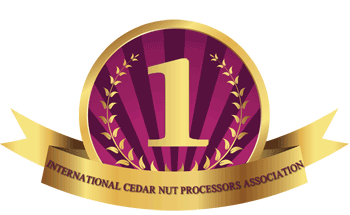








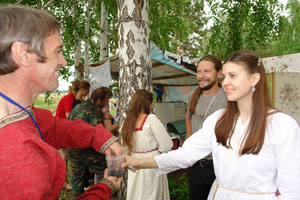

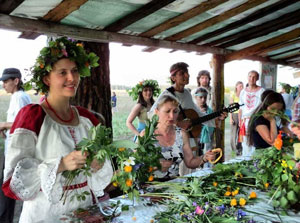
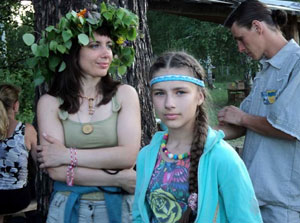

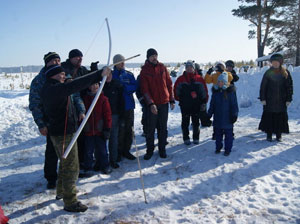

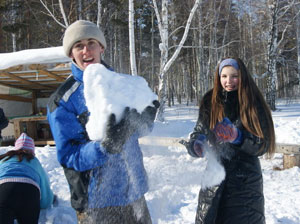






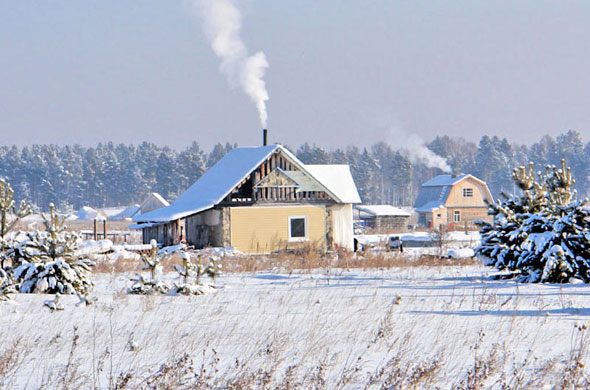
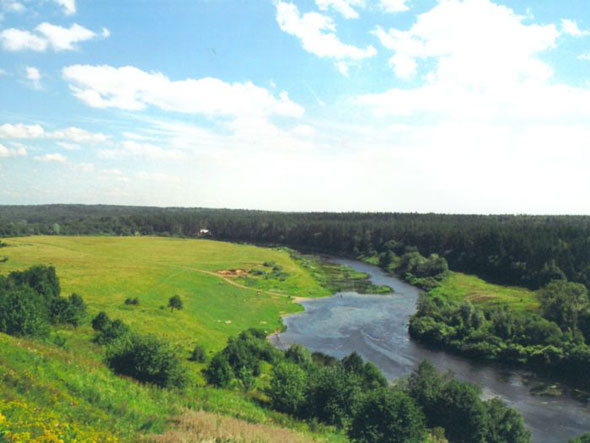


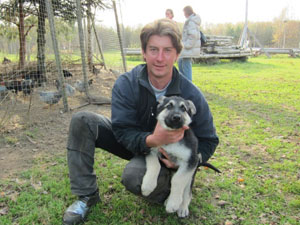

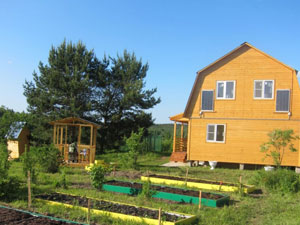
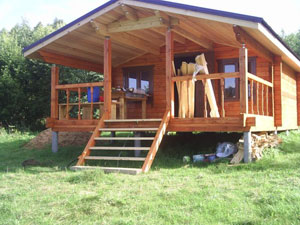
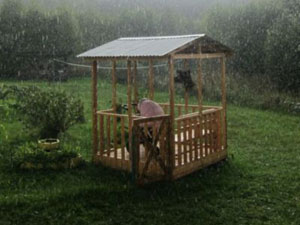
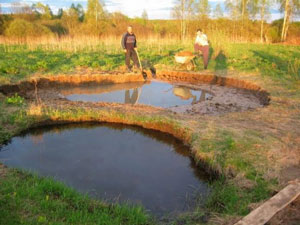
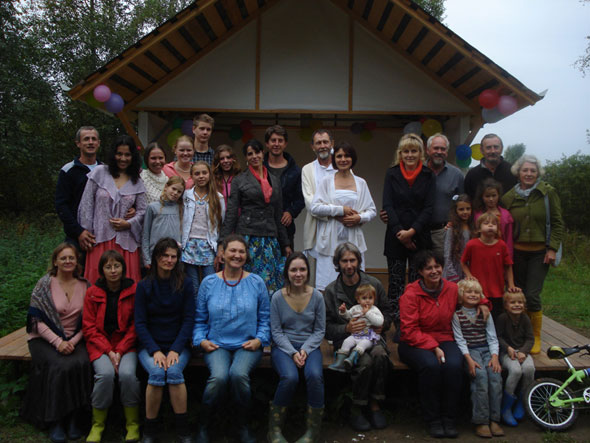














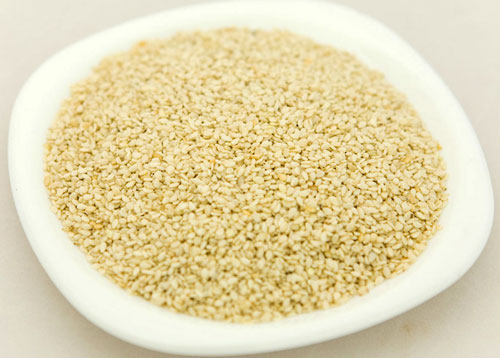






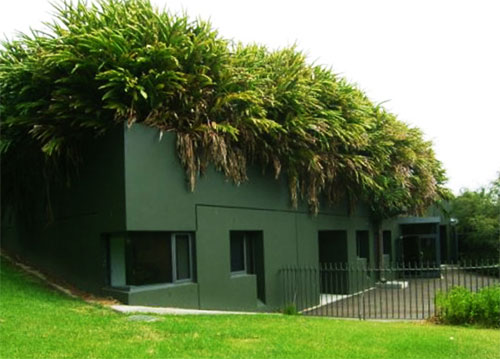

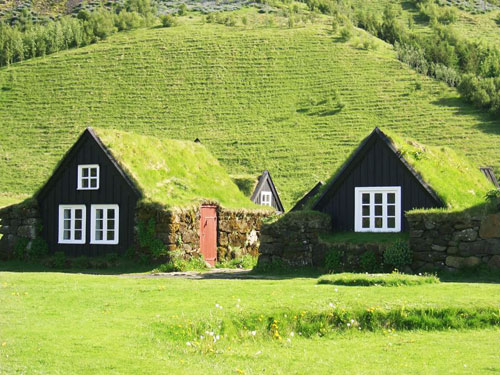
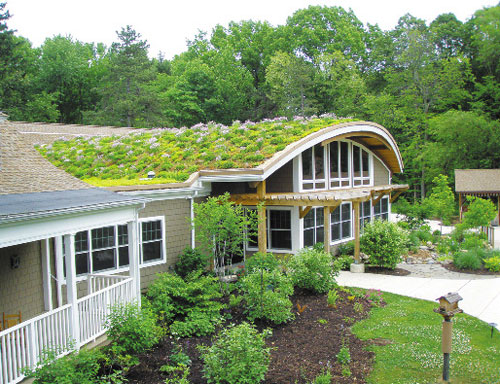















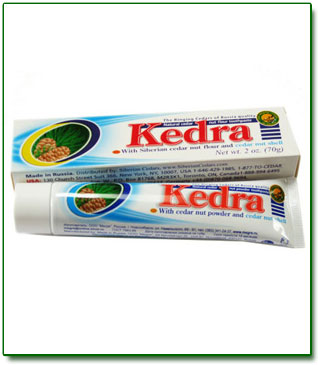

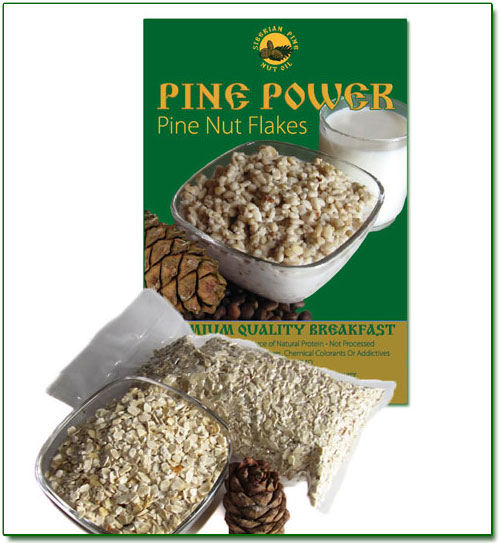


 Mailing Address USA
Mailing Address USA  Mailing Address CANADA
Mailing Address CANADA  Customer service in ENGLAND
Customer service in ENGLAND 






 Mailing Address
Mailing Address